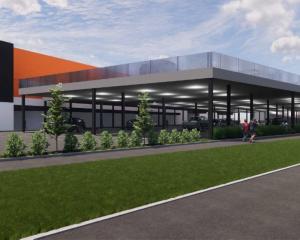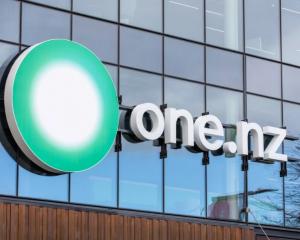Record gold production, industry-leading low cash costs and a hedging programme in place all bode well for Oceana Gold's full-year report later this week.
Two months of global spot gold price gains around 12% have been reflected in Oceana's shares similarly picking up - 66% so far this year.
Oceana's share price is reflecting recent steady gains.
It hit a high of $3.44 last March, before plunging to $1.40 in June. From $1.70 in early January, its shares have gained steadily to trade around $2.83 yesterday.
The global spot price of gold has surged during the past 60 days, up almost 12% from $US1180 to trade around $US1320 in New York yesterday.
In a snapshot operational report last month, Oceana produced a record 325,732 ounces of gold, just beyond earlier guidance, reduced debt by $US45 million ($NZ53.7 million) and has slashed gold production costs, by offsetting copper sales from its northern Philippine gold-copper mine.
Oceana's past year has not been without pain, as about 100 New Zealand staff, including contractors, lost their jobs at Macraes in East Otago in the face of a diminishing gold price and rising production costs.
Oceana is scheduled to deliver its full calendar-year report tomorrow.
Craigs Investment Partners broker Peter McIntyre said Oceana's result would be closely scrutinised on several fronts, including the crucial cash costs, its consistent reduction in debt, the effects of the recent South Island restructuring and cash flow.
''We can expect some guidance on its global prospects, at Didipio [in the Philippines] and El Salvadore. Investors will want to be getting a feel for Didipio [production], post-Macraes and Reefton,'' Mr McIntyre said.
The life of Macraes open-pit mine has been shortened by two years to the end of 2017, Frasers underground at Macraes to mid-2015 and, on the West Coast, Reefton open-pit operations are on notice for mothballing in mid-2015.
In 2010 and 2011, Oceana booked after-tax profit of around $US40 million each year, followed by $US20.6 million for 2012.
Mr McIntyre expected ''a move back into the [after-tax profit] zone of 2011'', for the 2013 result.
He said the rise in Oceana's share price corresponded with the rising spot price, highlighting that the rising spot price meant Didipio's contribution towards gold sales could increase cashflows markedly for Oceana.
The spot price rising was tempered by Oceana having a hedging collar in place for two-thirds of New Zealand gold sales, between $US1500 to $US1600, to lock in cashflows.
Forsyth Barr broker Andrew Rooney said Oceana had a record-breaking fourth quarter to December, producing the most gold and copper for a quarter.
''The high copper sales meant cash costs also beat guidance and that overall Oceana Gold is one of the lowest-cost gold producers,'' Mr Rooney said.
Oceana's strong finish to the calendar 2013 year prompted Forsyth Barr to upgrade its forecast full-year earnings before interest, tax, depreciation and amortisation.
''Half the upgrade is due to strong copper sales and the other half due to reduced operating costs in New Zealand,'' Mr Rooney said.
Oceana had ''several opportunities in the pipeline'', including a switch from diesel powered electricity generation in the Philippines to the national power grid, a feasibility study into producing tungsten at Macraes to extend mine life, and its $12.1 million El Salvadorian purchase.
While the El Dorado gold silver deposit did not yet have mining consent, Oceana was building a track record of developing difficult mines, he said.
''We believe this transaction is positive, as Oceana Gold is gaining a low-cost option for a high-quality project,'' Mr Rooney said.
Oceana has produced more than 3.8 million ounces of gold during the past 23 years, mainly from Macraes operations.











